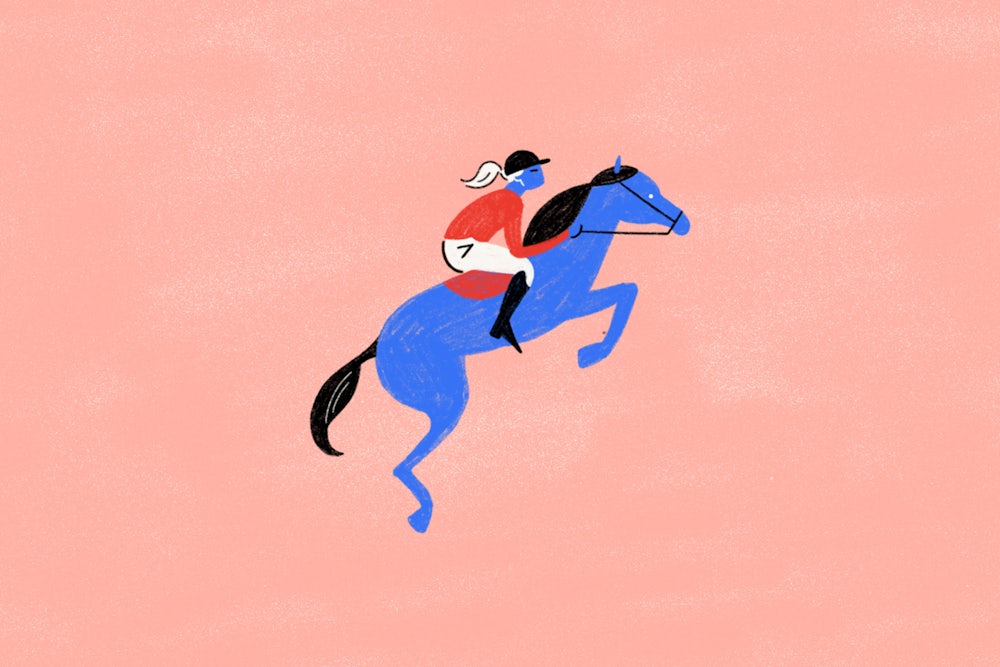Dressage is often described as “horse ballet” and like ballet, it can be inscrutable and boring to general audiences. If you don’t care to watch a horse prance in place to the theme from The Great Escape, for instance, you won’t be impressed by the gold medal-earning efforts of Charlotte Dujardin and her horse Valegro in the last summer Olympics. If you aren’t in the habit of thinking about the mechanics of a canter, you won’t notice the leading leg switch that takes place during a flying change. And if you can only cheer for a competitor who pants with exertion at the end of their performance, you’ll be disappointed; to the casual observer, dressage appears to require less than or about as much human athleticism as does competitive dog dancing. Also like ballet, the sport is associated with extreme wealth and refined sensibilities. That’s why the Romneys’ ownership of an Olympic dressage horse was a “political liability” during the year Mitt tried to appeal to average voters.
In our favorite fictions, when spirited, non-wealthy children excel at horsemanship, they do it through winning races (National Velvet) or better yet, galloping wild on the sand (Misty of Chincoteague) or best of all, both (The Black Stallion). They don’t do it by spending years practicing minute adjustments in order to wordlessly communicate with a sensitive, highly trained horse, because there is nothing spontaneous or exciting or loud in that. (You lose points if you speak during a dressage test.) Dressage involves no racing and no jumping but plenty of finicky gaits and specific ways of standing. One of the judging categories is “extended walk.”
As Americans, we like our horses like we like (to imagine) ourselves: heedless, powerful, selectively friendly. Modern dressage has its roots in training cavalry steeds, where obedience was paramount. The image of a horse “on the bit”—with its chin tucked in so that the forehead is perpendicular to the ground—is the image of an animal in submission. It’s the antithesis of the long, stretching neck of a horse in full gallop, and it’s the posture a horse is expected to assume for the duration of a dressage performance.
Yet it’s this dissonance between a horse’s instinctive movement and the elements of dressage that makes dressage such a triumph. A horse is a prey animal, predisposed to flight and equipped with efficient means for the same. For it to allow a human being to manipulate its movements is already a wonder. So what some may characterize as mastery over, others perceive as cooperation with; good riding is a partnership. No equestrian competitor can participate in the Olympics without the horse they’ve committed to, meaning there can be no substitutions, no changes. If the horse they’ve been admitted with becomes ill or injured, they too are out.
The increasingly self-destructive tendencies of the American id have been brought into stark relief by the rise of presidential candidate Donald Trump, a man who said on the campaign trail that legendary racehorse Secretariat “wasn’t one of the best.” (We can only imagine what he makes of dressage.) Given the election year stakes, it may be time for us to hang up our national fantasy of hopping on the back of a wild, impetuous animal to blast into easy victory. Perhaps we can consider the merits of enterprises based on give and take instead of mutual recklessness.
One last thought about this particular, peculiar ballet: The equestrian events are the only portion of the Olympics in which women and men compete against one another. Since 1996, all medalists in individual dressage have been women.
